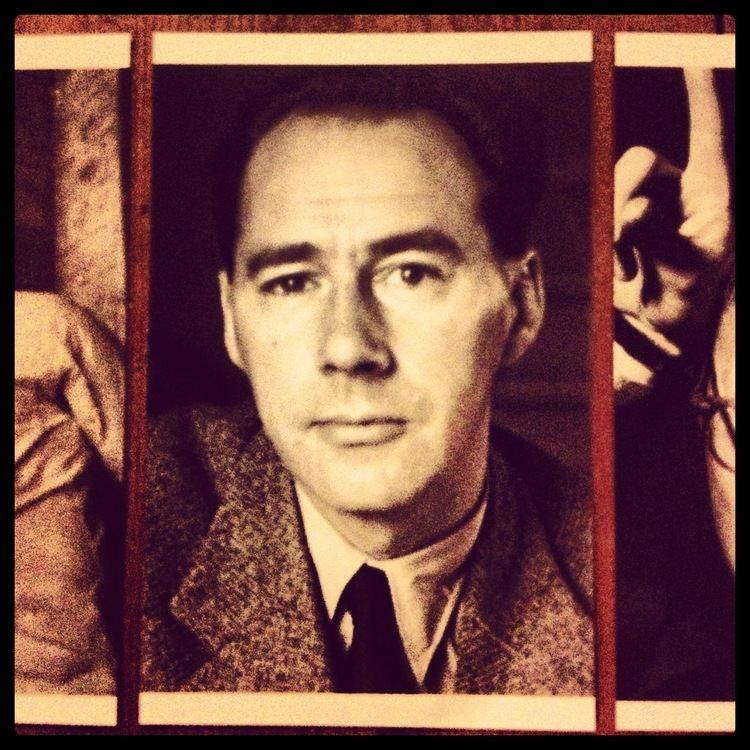Nationality English Siblings Vivian Beynon Harris Role Fiction writer | Name John Wyndham | |
Other names John Wyndham Parkes Lucas Beynon Harris Died March 11, 1969, London, United Kingdom Spouse Grace Isabel Wilson (m. 1963–1969) Movies Village of the Damned, The Day of the Triffids, Children of the Damned Books The Day of the Triffids, The Chrysalids, The Midwich Cuckoos, The Kraken Wakes, Chocky Similar People Wolf Rilla, Stirling Silliphant, Steve Sekely, John Carpenter, Grace Wilson | ||
Occupation Science fiction writer | ||
Inspirational Authors: John Wyndham
John Wyndham Parkes Lucas Beynon Harris (; 10 July 1903 – 11 March 1969) was an English science fiction writer best known for his works written using the pen name John Wyndham, although he also used other combinations of his names, such as John Beynon and Lucas Parkes. Many of his works were set in post-apocalyptic landscapes. His best known works include The Day of the Triffids (1951) and The Midwich Cuckoos (1957), the latter filmed twice as Village of the Damned.
Contents
- Inspirational Authors John Wyndham
- Early life
- Career
- World War II
- Postwar
- Personal life
- Death
- Early novels published under other pen names
- Novels published in his lifetime as by John Wyndham
- Posthumously published novels
- Short story collections published in his lifetime
- Posthumously published collections
- Short stories
- Critical reception
- References

Early life

Wyndham was born in the village of Dorridge near Knowle, Warwickshire (now West Midlands), England, the son of George Beynon Harris, a barrister, and Gertrude Parkes, the daughter of a Birmingham ironmaster.

His early childhood was spent in Edgbaston in Birmingham, but when he was 8 years old his parents separated and he and his brother, the writer Vivian Beynon Harris, spent the rest of their childhood at a number of English preparatory and public schools, including Blundell's School in Tiverton, Devon, during World War I. His longest and final stay was at Bedales School near Petersfield in Hampshire (1918–21), which he left at the age of 18, and where he blossomed and was happy.
Career
After leaving school, Wyndham tried several careers, including farming, law, commercial art and advertising, but mostly relied on an allowance from his family. He eventually turned to writing for money in 1925 and, by 1931, was selling short stories and serial fiction to American science fiction magazines, most under the pen names "John Beynon" and "John Beynon Harris", although he also wrote some detective stories.
World War II
During World War II, Wyndham first served as a censor in the Ministry of Information, then joined the British Army, serving as a Corporal cipher operator in the Royal Corps of Signals. He participated in the Normandy landings, although he was not involved in the first days of the operation.
Postwar
After the war, Wyndham returned to writing, inspired by the success of his brother, who had four novels published. He altered his writing style; and, by 1951, using the John Wyndham pen name for the first time, he wrote the novel The Day of the Triffids. His pre-war writing career was not mentioned in the book's publicity, and people were allowed to assume that it was a first novel from a previously unknown writer.
The book proved to be an enormous success and established Wyndham as an important exponent of science fiction. During his lifetime, he wrote and published six more novels under the name John Wyndham.
Personal life
In 1963, he married Grace Isobel Wilson, whom he had known for more than 20 years; the couple remained married until he died. He and Grace lived for several years in separate rooms at the Penn Club, London and later lived near Petersfield, Hampshire, just outside the grounds of Bedales School. A collection of his letters to Grace written during the Second World War are held in the University of Liverpool archive. Wyndham explores the issues around women being forced by their biology to choose between careers and love in Trouble with Lichen.
Death
He died in 1969, aged 65, at his home in Petersfield, survived by his wife and his brother. Subsequently, some of his unsold work was published; and his earlier work was re-published. His archive was acquired by Liverpool University.
On 24 May 2015 an alley in Hampstead that appears in The Day of the Triffids was formally named Triffid Alley as a memorial to him.
Early novels published under other pen names
Novels published in his lifetime as by John Wyndham
Posthumously published novels
Short story collections published in his lifetime
Posthumously published collections
Short stories
John Wyndham's many short stories also appear with later variant titles or pen names. His stories include:
Critical reception
John Wyndham's reputation rests mainly on the first four of the novels published in his lifetime under that name. The Day of the Triffids remains his best-known work, but some readers consider that The Chrysalids was really his best.
He also wrote several short stories, ranging from hard science fiction to whimsical fantasy. A few have been filmed: Consider Her Ways, Random Quest, Dumb Martian, Jizzle (filmed as Maria) and Time to Rest (filmed as No Place Like Earth). There is also a radio version of Survival.
Most of Wyndham's novels are set in the 1950s among middle-class English people. Brian Aldiss, another British science fiction writer, disparagingly labelled some of them "cosy catastrophes", especially The Day of the Triffids, but the critic L.J. Hurst pointed out that in Triffids the main character witnesses several murders, suicides and misadventures, and is frequently in mortal danger himself.
